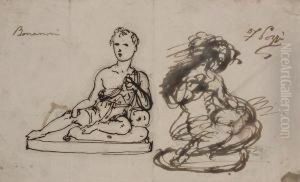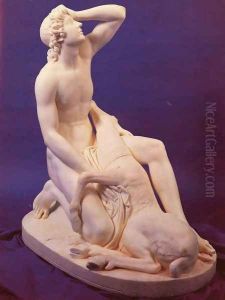Francesco Pozzi Paintings
Francesco Pozzi was an 18th-century Swiss sculptor known for his work in stucco. Born on September 5, 1745, in Vico Morcote, a small town in the Italian-speaking part of Switzerland, Pozzi came from a family of artists; his father, Giovanni Pozzi, was also a stucco artist, which was a common trade in the region.
Francesco Pozzi's career was marked by his travels and the works he completed across Europe. He often worked with his brother, Giovanni Battista Pozzi, particularly in the early stages of his career. The brothers were active in Germany and Russia, among other places, contributing to the decoration of palaces and churches.
Pozzi was particularly known for his elaborate Rococo style, which was characterized by its lightness, elegance, and fluid forms. His work often included intricate designs and figures that were incorporated into the architectural elements of the interiors where he worked.
One of his significant contributions was his work in the Catherine Palace in St. Petersburg, Russia, where he was involved in creating stucco decorations. His ability to blend sculpture with architecture was highly appreciated, and he gained recognition for his craftsmanship and artistic creativity.
Despite his notable works and contributions to the Rococo style, many details of Pozzi's life and career remain obscure, and his works have often been overshadowed by those of other artists of the time. Nonetheless, Pozzi's contributions to the art of stucco decoration are recognized among scholars of 18th-century European art.
Francesco Pozzi passed away on July 23, 1804, in St. Petersburg, Russia. His legacy lives on through the ornate stucco work that adorns the walls and ceilings of historic buildings, reflecting the opulent tastes of the period and the technical skill of their creators.

